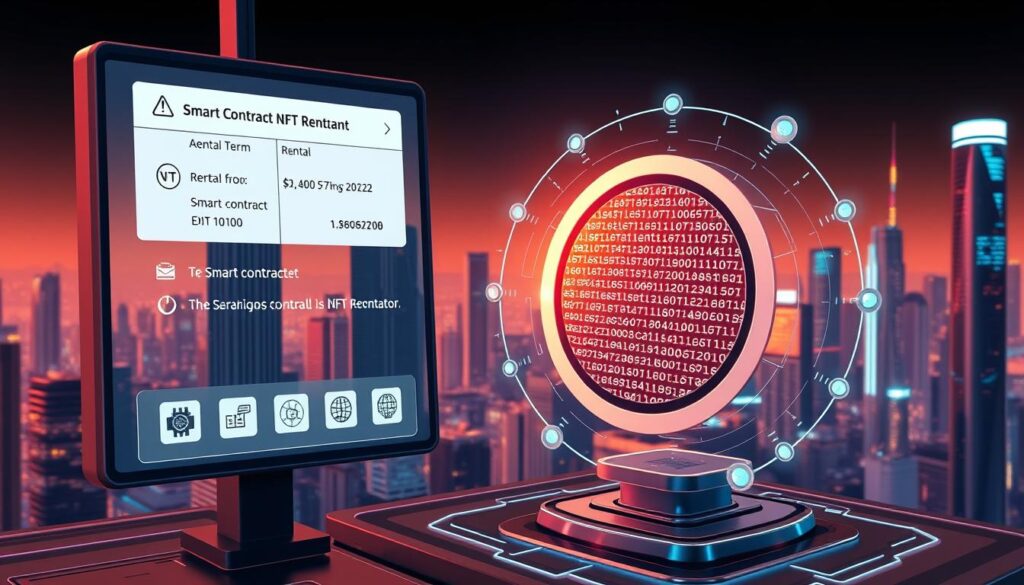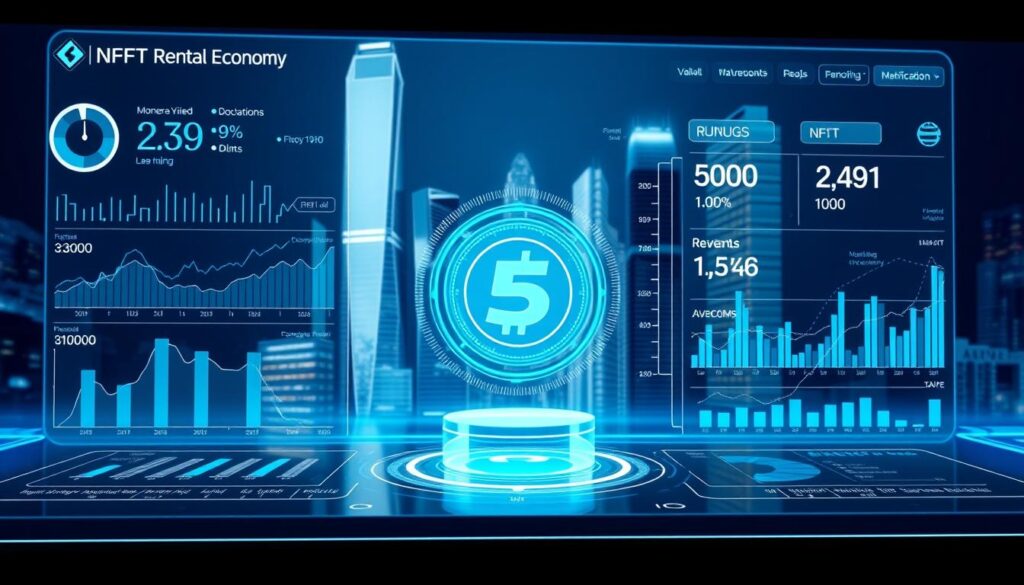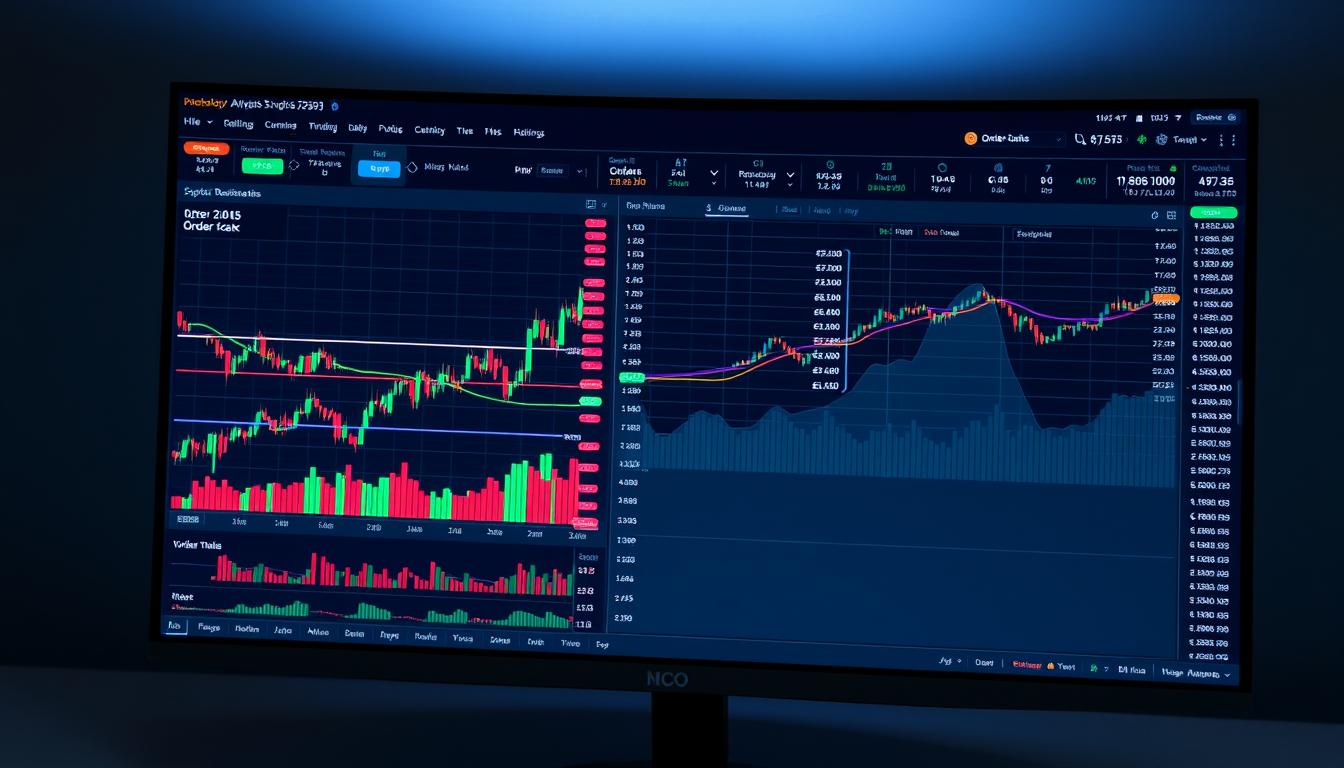Now Reading: NFT Rental Income Passive Earning Strategies for Investors
- 01
NFT Rental Income Passive Earning Strategies for Investors
NFT Rental Income Passive Earning Strategies for Investors

The world of digital ownership is rapidly expanding. Many are looking for ways to make their digital assets work for them. This guide explores innovative approaches to generate value from your portfolio.
The market for these unique digital items has seen explosive growth. According to Business Research Insights, it was valued at $15.53 billion in 2021. It is projected to reach a staggering $73.90 billion by 2028.
This growth opens up significant financial opportunities. The concept moves beyond just buying and holding. It’s about leveraging blockchain technology to create consistent returns.
This mirrors traditional investment models like real estate or stocks. The goal is to put your holdings to work automatically. Smart contracts can help manage these processes securely.
We will outline several methods available to holders. These include letting others use your assets and earning from ongoing sales. This creates a sustainable model for both owners and users in the new web economy.
Key Takeaways
- The digital collectibles market is experiencing massive growth, presenting new financial opportunities.
- Ownership is evolving to include ways to generate consistent value from your holdings.
- Blockchain technology enables automated and secure management of these approaches.
- These models are similar to traditional investments like rental properties or dividend stocks.
- Various methods exist to put your portfolio to work without needing to sell your items.
- This creates a sustainable ecosystem for all participants in the emerging digital landscape.
Introduction to NFT Rental Income Passive Earning Strategies
What began as digital art speculation has evolved into a sophisticated asset class with practical applications. The market for unique digital items reached a turning point in 2021 when record-breaking sales demonstrated their substantial value.
This transformation represents a fundamental shift in how people view ownership and value in the digital space. Blockchain technology enables new financial models that were previously impossible.
Understanding the evolving NFT landscape
The ecosystem has matured beyond simple collectibles. Digital assets now serve practical purposes in gaming, virtual worlds, and financial protocols.
This creates tangible benefits for holders. The technology allows for innovative approaches to generating consistent returns from digital holdings.
Overview of passive income opportunities through rentals
Temporary access rights create mutually beneficial arrangements. Asset owners maintain ownership while receiving regular payments.
This model works continuously with minimal effort. It provides a predictable revenue stream compared to traditional trading methods.
| Year | Key Development | Market Impact |
|---|---|---|
| 2017 | First major digital collectibles emerge | Established basic ownership concepts |
| 2021 | Record-breaking sales reach millions | Demonstrated significant market value |
| 2023 | Utility-focused applications expand | Created practical earning opportunities |
Fundamentals of NFT Rentals
Modern blockchain technology enables flexible access models for digital collectibles without permanent transfers. These arrangements create value for both asset holders and those seeking temporary usage.

The system operates through dedicated platforms that connect interested parties. Owners specify terms while users gain limited-time privileges.
Defining NFT Rentals and Temporary Access Rights
Temporary leasing arrangements grant time-limited usage of digital assets. The original maintainer retains ultimate ownership throughout the entire period.
This creates recurring payment streams for holders. Users benefit from accessing valuable tokens without long-term commitment.
The framework supports various applications including gaming assets and virtual gallery displays. Both parties agree on specific duration and conditions beforehand.
How Smart Contracts Drive Rental Processes
Self-executing agreements automate the entire rental workflow. These digital contracts verify conditions before transferring temporary access rights.
Smart contracts manage payments and automatically terminate leases at predetermined times. This eliminates manual intervention and reduces transaction costs.
Security features include escrow services that hold assets in trust during the usage period. The blockchain provides immutable records of all transactions, building trust in the marketplace.
NFT rental income passive earning strategies
Digital asset holders can now unlock consistent value from their collections through temporary access arrangements. This approach creates sustainable revenue streams while maintaining full ownership rights.

Mechanics of Generating Ongoing Returns from Digital Asset Rentals
The process begins when owners list their tokens on specialized platforms. They set duration limits and pricing based on market demand and asset utility.
Smart contracts automate the entire workflow. Payments flow directly to the owner’s wallet when users access the assets. This creates continuous returns without active management.
Multiple items from a collection can be rented simultaneously. This diversification stabilizes earnings compared to relying on single asset sales.
Key Differences Between Ownership and Temporary Access
Owners maintain ultimate possession throughout rental periods. They benefit from potential appreciation while receiving regular payments.
Renters gain time-limited privileges without large upfront costs. They can test premium assets before committing to purchases.
This model reduces barriers for newcomers exploring digital collections. It provides flexible access options while generating steady cash flow for holders.
Leveraging NFT Platforms for Passive Income
Specialized marketplaces have emerged to facilitate temporary access arrangements for digital collectibles. These platforms create efficient ecosystems where asset holders can connect with interested users.

Overview of Popular NFT Rental Platforms
Leading marketplaces include reNFT, Vera, Trava NFT, and OpenSea. Each platform offers unique features tailored to different asset types and user needs.
reNFT pioneered the rental marketplace concept with specialized tools. Vera focuses on gaming assets with collateral-free options. OpenSea brings mainstream adoption and extensive liquidity to the ecosystem.
Dynamic Pricing Models and Secure Escrow Services
Platforms implement sophisticated pricing systems that adjust rates based on market demand. These algorithms consider asset rarity, historical data, and competitive listings.
Secure escrow services protect both parties during transactions. Smart contracts automatically handle payments and asset transfers. This creates trust through transparent, automated processes.
Community rating systems and comprehensive analytics help users make informed decisions. These features build confidence in the marketplace environment.
Cost-Efficiency and Risk Mitigation in NFT Rentals
Investors seeking to minimize exposure while maximizing access find significant advantages in temporary digital asset arrangements. This model provides a practical pathway into the market without the substantial capital required for full purchase.
Temporary access opens doors for broader participation. It allows engagement with premium collections that might otherwise be financially out of reach.

Diversification of Digital Assets
Building a varied portfolio is a cornerstone of sound investment strategy. Temporary access enables exposure to different types of assets without locking up capital.
This approach enhances overall collection management. It allows for testing various utilities and communities before making long-term commitments.
The table below highlights key differences between the two approaches for managing your digital holdings.
| Aspect | Temporary Access Model | Full Ownership Model |
|---|---|---|
| Upfront Cost | Significantly lower, periodic payments | High, one-time purchase price |
| Portfolio Flexibility | High, easy to change assets | Lower, capital is tied up |
| Risk Exposure | Limited to rental period | Full exposure to market swings |
| Liquidity Requirement | Minimal for user | Substantial capital commitment |
This framework serves as a prudent strategy for cautious participants. It provides a way to experience benefits while managing potential downsides effectively.
Diversification through this method spreads risk across different asset classes. It creates a more resilient and dynamic approach to building a digital collection.
Integrating NFT Rentals into Your Investment Portfolio
Building a comprehensive digital collection requires thoughtful allocation across different asset types and risk profiles. This approach combines owned tokens that generate regular payments with temporary access positions for market exposure.
The 60/30/10 framework offers a practical starting point. Allocate 60% to stable assets with consistent demand, 30% to growth-focused collections, and 10% to experimental opportunities.
Strategies to Balance Risk and Reward
Conservative investors might focus on established collections with predictable returns. More aggressive approaches use payments to fund speculative positions in emerging projects.
Reinvesting earnings creates self-sustaining portfolio growth. Consider directing payments toward additional income-generating assets or staking in liquidity pools.
Maintain sufficient wallet balances for transaction fees and opportunistic purchases. Track performance metrics like yield percentages and adjust allocations based on market conditions.
This integration transforms static holdings into dynamic sources of value. It provides uncorrelated returns that enhance overall portfolio performance while managing volatility effectively.
NFT Rentals in Gaming and the Metaverse
Interactive digital worlds are reshaping how people engage with virtual property and gaming assets. This creates a vibrant ecosystem where temporary access models thrive.
Rental opportunities for gamers and digital citizens
Play-to-earn games like Axie Infinity have created huge demand for powerful in-game characters. Not all players can afford to own these assets outright.
Temporary access lets gamers use premium items to boost their performance. They can earn rewards without a large upfront cost.
In the metaverse, platforms like Decentraland and The Sandbox offer similar chances. Users can rent virtual land, wearables, and vehicles to enhance their digital experience.
Enhancing community engagement and discoverability
This model builds stronger, more inclusive communities. Lowering the cost of entry brings in more diverse participants.
When an asset is rented, it gains exposure to a wider audience. This increased visibility can boost its popularity and long-term value.
The table below shows how different assets are used across major platforms.
| Platform | Popular Asset Types | Primary User Benefit |
|---|---|---|
| Axie Infinity | Gaming characters (Axies) | Competitive advantage and reward generation |
| The Sandbox | Virtual LAND, avatar items | Customization and social presence |
| Decentraland | Wearables, real estate, names | Identity expression and exploration |
This system creates a win-win scenario for the entire market. Owners receive consistent returns, while users gain affordable access to premium digital goods.
Future Trends and Innovations in NFT Rentals
Emerging technologies are poised to revolutionize how collectors engage with their digital holdings. The landscape continues to evolve with groundbreaking developments that promise enhanced accessibility and functionality.
These advancements will transform how people interact with digital property. They create new opportunities for both owners and users in the ecosystem.
Blockchain interoperability and evolving rental models
Cross-chain solutions will enable seamless transactions across different networks. This interoperability expands the market potential significantly.
New models like fractional access and subscription plans are emerging. They provide flexible options for various user needs and budgets.
Artificial intelligence integration for enhanced user experience
AI algorithms will optimize pricing and match users with suitable assets. This technology integration improves efficiency across platforms.
Predictive analytics help owners maximize their returns. They provide insights based on historical data and current trends.
Mainstream adoption and the future of NFT liquidity
Simplified interfaces and fiat payment options will drive wider acceptance. This moves digital assets toward mainstream adoption.
Increased participation enhances overall market liquidity. It creates a more dynamic and accessible environment for all participants.
Conclusion
This guide has outlined a significant evolution in how digital property can generate consistent value. The approaches discussed transform static holdings into dynamic assets.
These models offer multiple pathways for returns. They create a more inclusive ecosystem for all participants.
Understanding platform features and smart contract mechanics is crucial for success. A thoughtful approach helps align these methods with individual goals.
The future holds exciting innovations like AI integration and cross-chain solutions. These advancements will further enhance the potential of this space.
We encourage you to begin exploring these opportunities. Start with research and small positions to build your expertise in this growing market.
FAQ
What exactly is an NFT rental?
An NFT rental is a temporary transfer of usage rights for a digital asset. Instead of selling the token, the owner allows another user to access it for a set period through a smart contract, which automates the agreement and ensures secure transactions.
How can I earn from renting out my NFTs?
You can generate revenue by listing your collectibles on specialized platforms like ReNFT or IQ Protocol. These marketplaces handle the leasing process, and you earn fees or rewards for the duration of the rental without giving up ownership of your assets.
Are there risks involved with NFT rentals?
Like any crypto activity, there are potential risks, including smart contract vulnerabilities or market value fluctuations. However, using reputable platforms with secure escrow services and diversifying your portfolio can help mitigate these concerns.
What’s the difference between renting and staking NFTs?
Renting involves lending your digital assets for temporary use by others, while staking typically means locking your tokens in a liquidity pool to earn interest or rewards for supporting a blockchain network’s operations.
Which platforms support NFT rentals?
Several leading platforms facilitate these transactions. Popular choices include ReNFT, IQ Protocol, and Double Protocol. These sites provide the necessary infrastructure, such as dynamic pricing and automated contracts, for a smooth leasing experience.
Can I rent NFTs for use in games or the metaverse?
Absolutely. This is a major use case. You can lease in-game items, virtual land, or avatar wearables on platforms like Decentraland or The Sandbox. This allows gamers to access premium digital assets without a large upfront investment.
Do I need technical knowledge to rent out my NFTs?
Not necessarily. User-friendly platforms have simplified the process. You generally just need to connect your wallet, list your collection, and set your terms. The underlying smart contracts handle the complex parts automatically.














